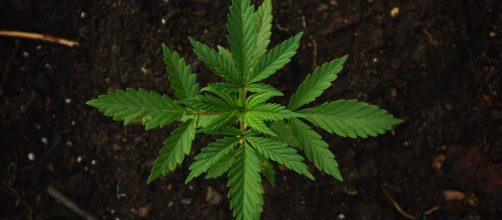The support for Cannabis Legalization has been getting stronger. However, that has not been the case in the past. Social stigma and association to hallucinating or getting high had become a barrier with which its benefits have been unfairly compared to since then.
These days, people are beginning to realize cannabis and hemp derivatives for what they are truly worth: a medicinal plant that can be infused into different products such as skincare, pet medicines, food, creams and many more.
Legalization in the U.S.
At the U.S. federal level, marijuana cultivation, manufacture of related products, transportation, sale, and use—mere possession—were officially criminalized in 1970 when the Controlled Substances Act was signed into law.
However, various attempts were made to minimize the penalty for violators, and many states started decriminalizing marijuana.
In 1996, the medical use of marijuana was legalized in California and soon others followed. Taking it a notch further, Colorado and the Washington State were the first two states to legalize the recreational use of the plant.
A recent clash between the federal law and state laws on marijuana and its derived products will be a significant legal litmus test on the status of cannabis use in the U.S. The Hemp Industries Association has recently filed a lawsuit that challenges the January 2017 rule of the Drug Enforcement Administration (DEA), which created a Controlled Substances Code Number for “marijuana extracts.”
According to the DEA, the rule is merely administrative, and it can help in tracking research and complying with international treaties.
On the other hand, the lawyers for a hemp industry trade association and hemp businesses contended that it could ultimately lead to the classification of cannabinoids as illegal substances.
The demand and supply factor
Despite the many hurdles in past decades, the market prospects for marijuana and its related products remain positive. The global market for weed is projected to grow to US$31.4 billion by the year 2021. At present, the U.S. market accounts for 90 percent of the global consumption of cannabis products.
According to the 2017 UN World Drug Report, there are more than 183 million users of marijuana worldwide. As the regulations about marijuana and its derivative products become more liberalized, the market for hemp will inevitably expand and become more sophisticated.
As the demand for cannabis and related goods increases, the competition among manufacturers and distributors also rises, leading to price shifts and innovations. This is a good opportunity for investors to invest as the market is growing. Many CBD companies are also expanding their products to include both medicinal and recreational brands.
Investing in cannabis companies
PotNetwork Holding, Inc. (OTCMKTS: POTN) is among the leading CBD companies that are doing well today. The company has just announced its revenues for the month of January 2018, amounting to US$2.1 million.
According to PotNetwork CEO Richard Goulding, M.D., the company expects to continue its growth trajectory in sales for 2018 after a steadily rising performance last year.
The strategies are so far on target and Gould hinted on plans to continue improvements and expansion.
One area that is likely to bring significant growth to the company is Diamond CBD. It has seven categories of products, namely, the edibles, oil, vapes, dabs, creams, herb grinders and CBD for pets. With the exception of the herb grinders, all these products are meant to have some therapeutic effects on pain management and inflammation reduction.
The market rally on Wall Street last February 12 also resulted in modest gains to cannabis stocks. The overall gains of the sector were pared by minimal losses among individual cannabis stocks. Monday also saw the launch of a new cannabis ETF, the Evolve Marijuana ETF.
The ETF closed its first day on the TSX at CA$19.99 per share.
In the long run, the global liberalization on regulations will create new and better opportunities for companies and investors. The temporary-demand gap is now creating bullish perceptions among investors.


